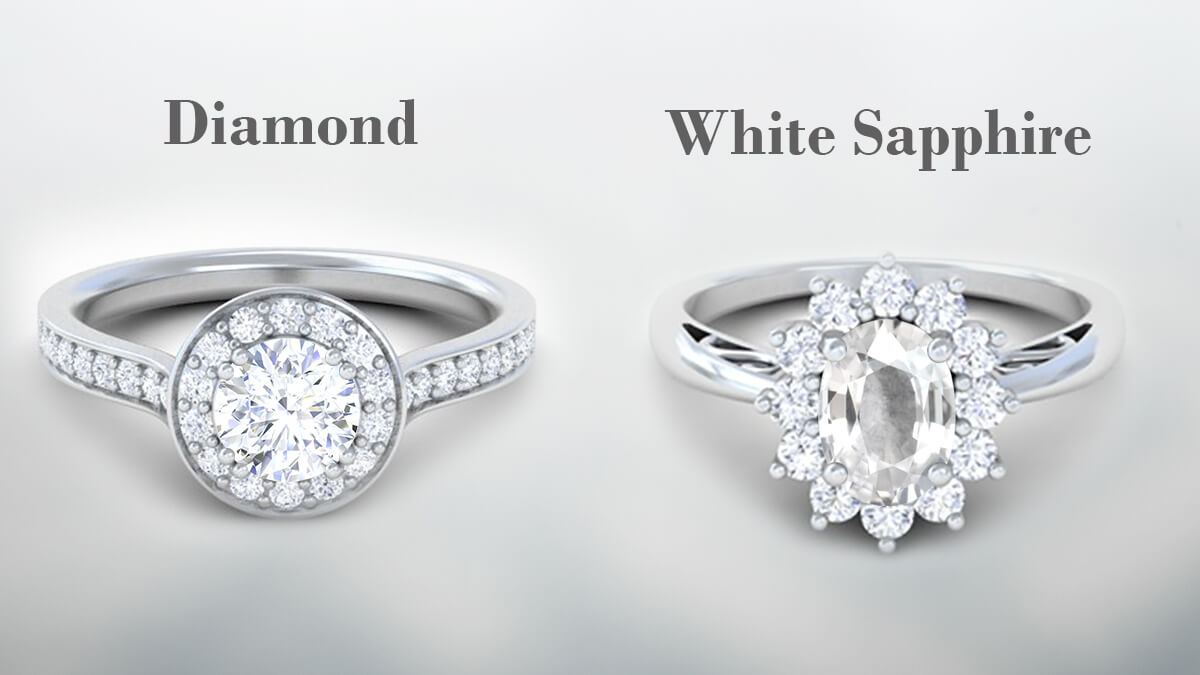Introduction
In the realm of precious gems, diamonds and white sapphires stand out as captivating choices for jewelry enthusiasts. Both exude brilliance and elegance, yet they possess distinct characteristics that appeal to different preferences and practical considerations. Whether you’re deciding on an engagement ring, a pair of earrings, or a special gift, understanding the differences between diamond and white sapphire is crucial for making an informed choice that aligns with your desires and lifestyle.
Composition and Properties
Diamond
Diamonds are composed of carbon atoms arranged in a crystalline structure under extreme pressure and temperature conditions deep within the Earth’s mantle. Renowned for their exceptional hardness diamond vs white sapphire, diamonds rank as the hardest substance on the Mohs scale with a rating of 10. This hardness contributes to their resilience against scratching and ensures longevity in everyday wear.
White Sapphire
Contrary to diamonds, white sapphires are primarily composed of aluminum oxide with trace elements that can include iron, titanium, chromium, or magnesium. They form naturally in various geological environments, often alongside other minerals. While not as hard as diamonds, sapphires still register a respectable 9 on the Mohs scale, making them durable and suitable for jewelry that withstands regular use.
Durability and Hardness
Diamond
The unmatched hardness of diamonds translates into superior durability, making them highly resistant to scratching and abrasion. This resilience ensures that diamond jewelry retains its pristine condition even after years of wear, maintaining its allure and value.
White Sapphire
White sapphires, although slightly less hard than diamonds, are still considerably durable and resistant to scratches. Their hardness makes them suitable for daily wear, although periodic maintenance may be necessary to preserve their brilliance and clarity over time.
Color and Clarity
Diamond
Diamonds exhibit a diverse range of colors, from colorless to fancy hues such as yellow, blue, pink, and black. The Gemological Institute of America (GIA) grades diamonds based on their colorlessness, with the highest grades (D-F) being the most valuable due to their rarity and purity.
White Sapphire
True to their name, white sapphires display a clear, colorless appearance similar to diamonds. They may also exhibit slight undertones of other colors such as blue or gray, depending on their origin and composition. Clarity in white sapphires is assessed based on the absence of internal flaws or inclusions that could affect their transparency and brilliance.
Brilliance and Sparkle
Diamond
One of the hallmark features of diamonds is their exceptional brilliance, characterized by the dispersion of light into a spectrum of colors known as fire. This unique optical property enhances the diamond’s sparkle, captivating the eye with every movement and light reflection.
White Sapphire
White sapphires possess a brilliant sparkle comparable to diamonds, albeit with subtle differences in light dispersion. Their brilliance depends on the cut and clarity of the stone, which influences how effectively they reflect and refract light to create a dazzling visual effect.
Ethical and Environmental Considerations
Diamond
Ethical concerns surrounding diamonds primarily revolve around conflict diamonds, also known as “blood diamonds,” which are mined in war zones and sold to finance armed conflict against governments. To address these issues, organizations like the Kimberley Process Certification Scheme (KPCS) certify diamonds as “conflict-free” if they originate from ethical sources. Additionally, advancements in technology have led to the development of lab-grown diamonds as a sustainable alternative to mined diamonds.
White Sapphire
White sapphires are generally mined under ethical labor practices and environmental regulations, although it’s essential to verify the specific sourcing practices of individual suppliers. Compared to diamonds, white sapphires have a lower environmental impact in terms of mining and processing, making them a relatively sustainable choice for eco-conscious consumers.
Maintenance and Care
Diamond
Proper maintenance and care are essential for preserving the brilliance and beauty of diamond jewelry. Regular cleaning with mild soap and warm water, along with professional inspections and maintenance, helps retain the diamond’s sparkle and ensures longevity.
White Sapphire
Similarly, white sapphires require regular care to maintain their clarity and brilliance. Cleaning with a gentle jewelry cleaner or warm soapy water, coupled with periodic professional inspections, helps prevent dirt buildup and ensures the stone’s lasting radiance.

